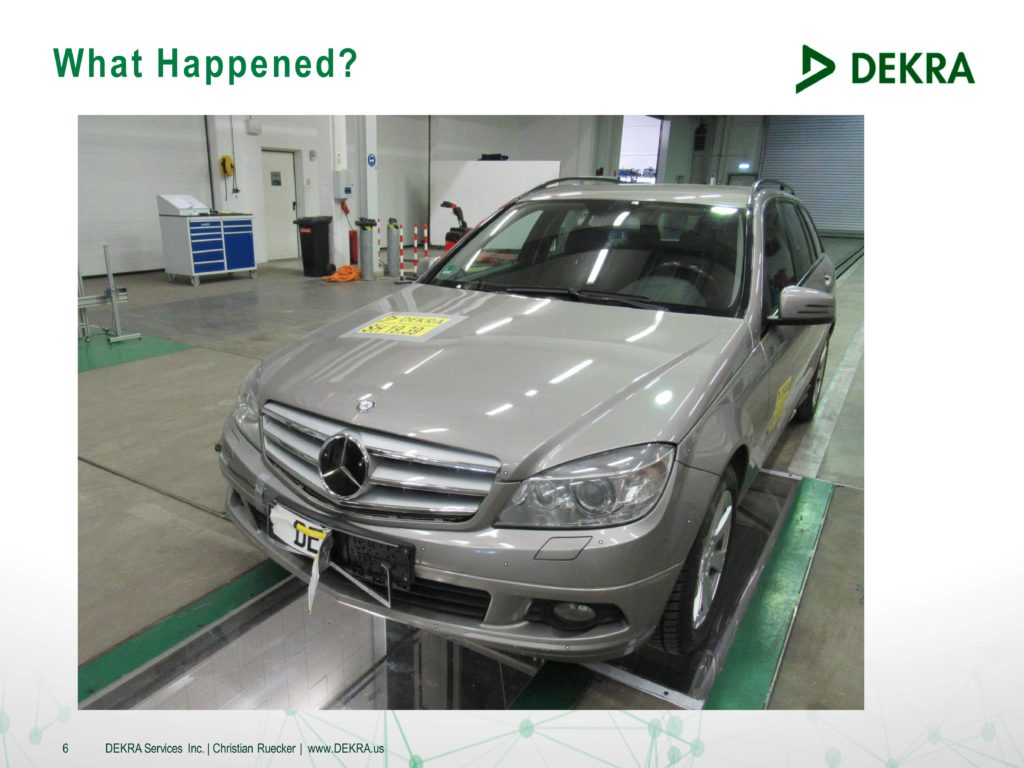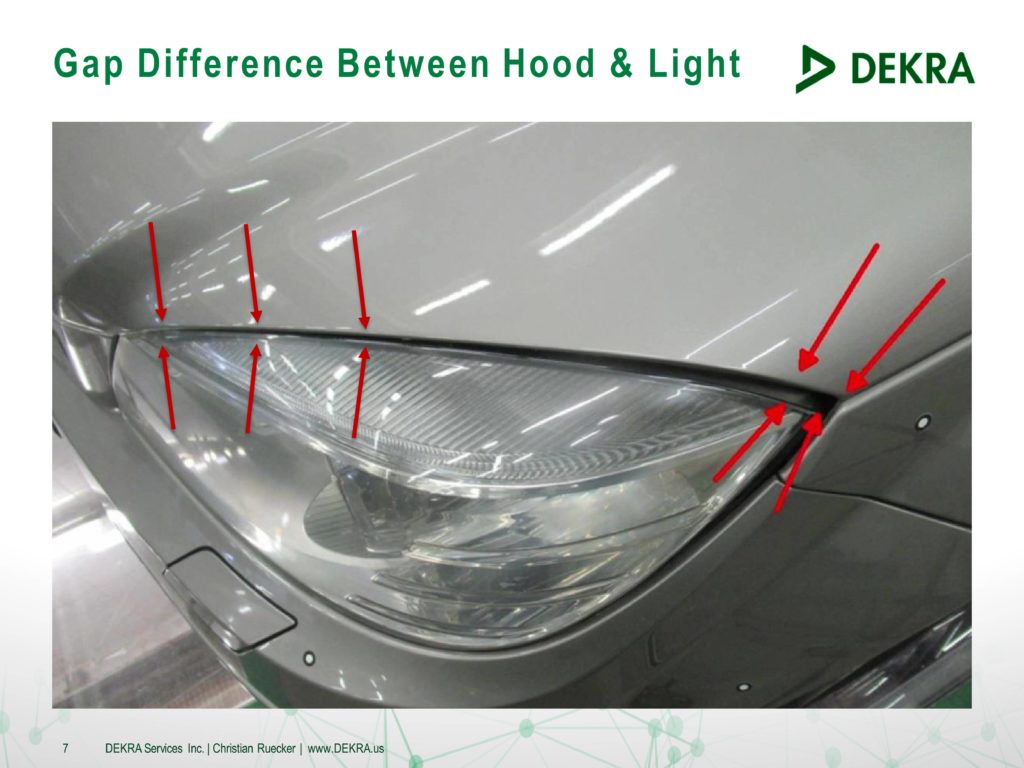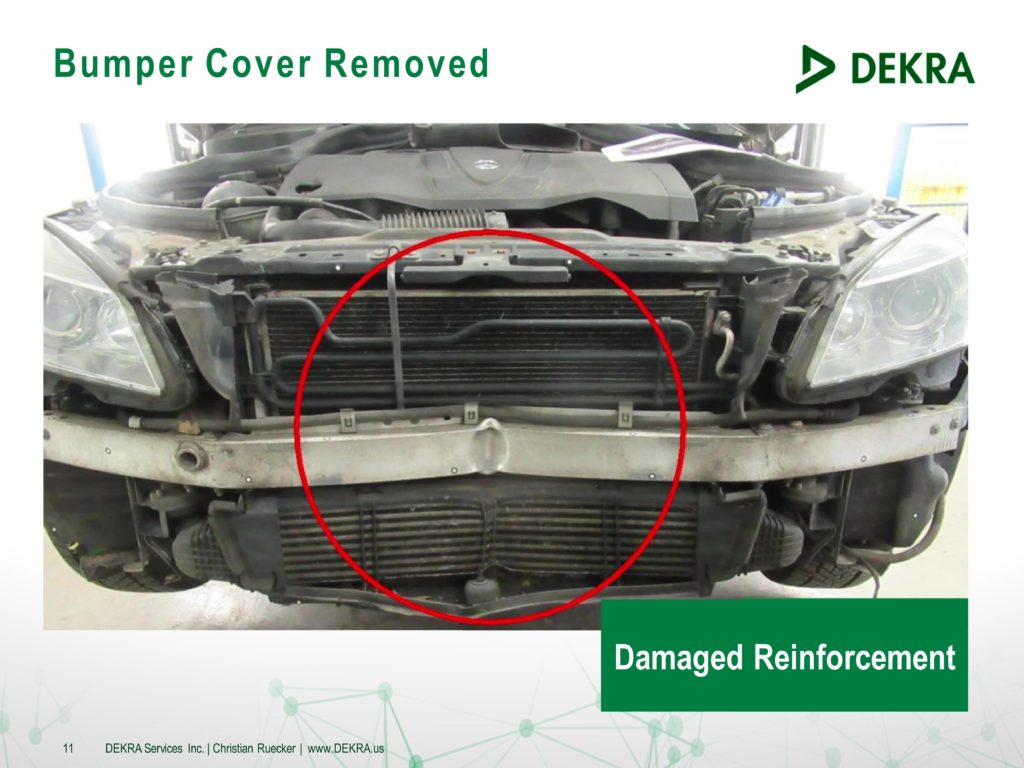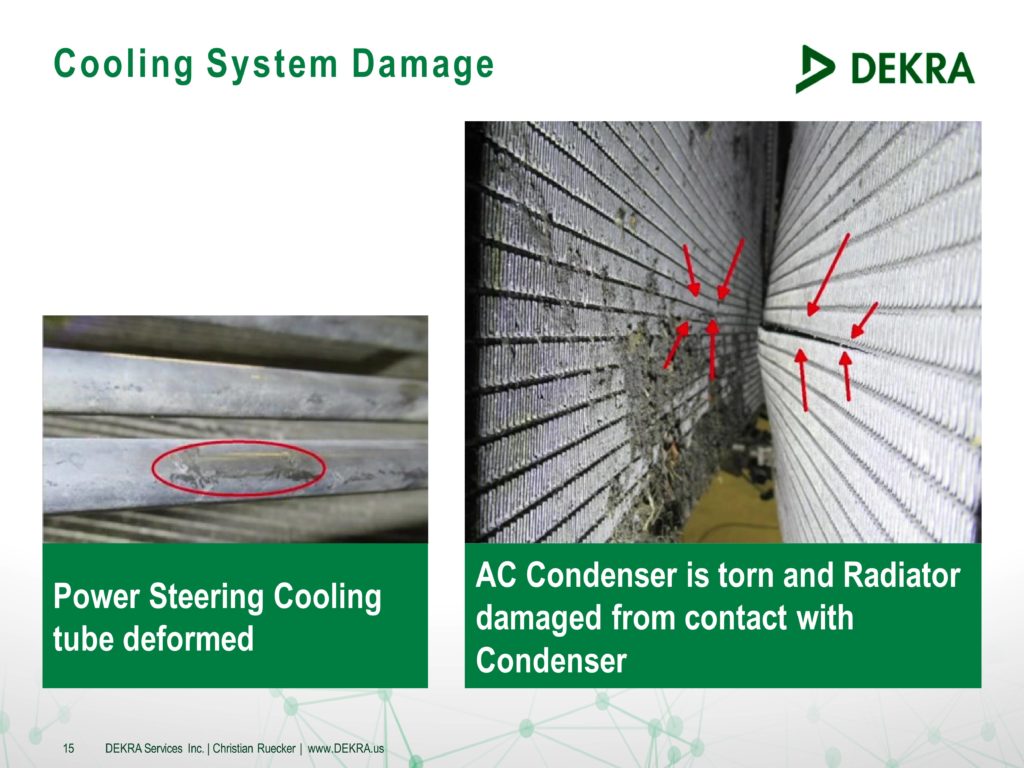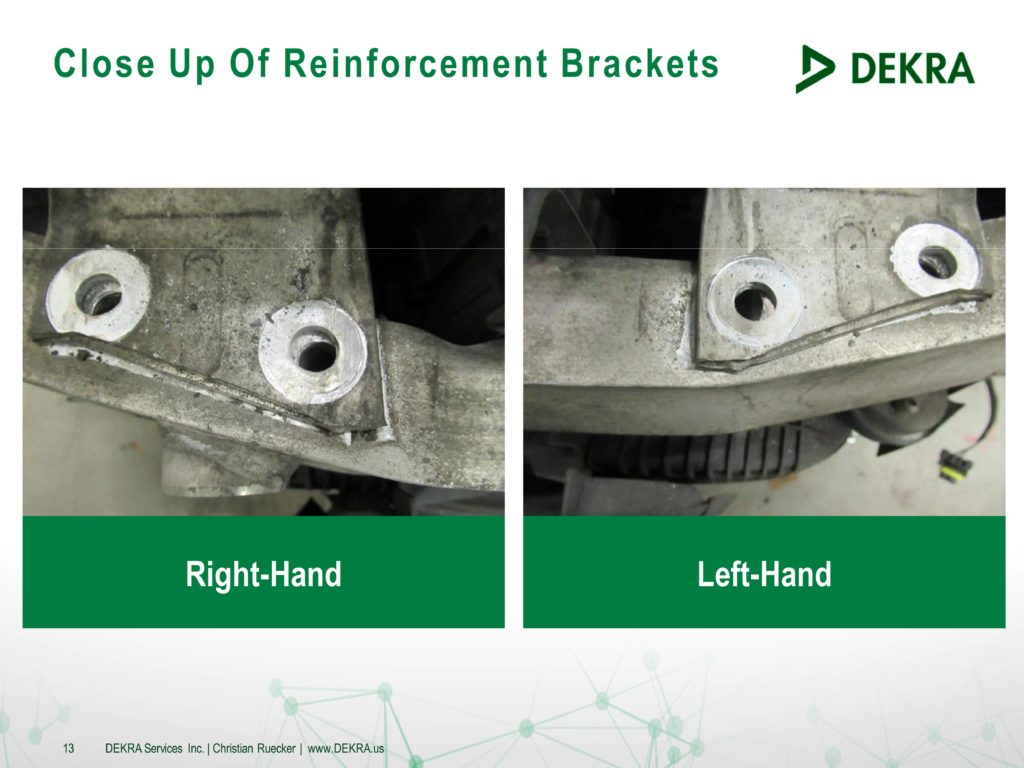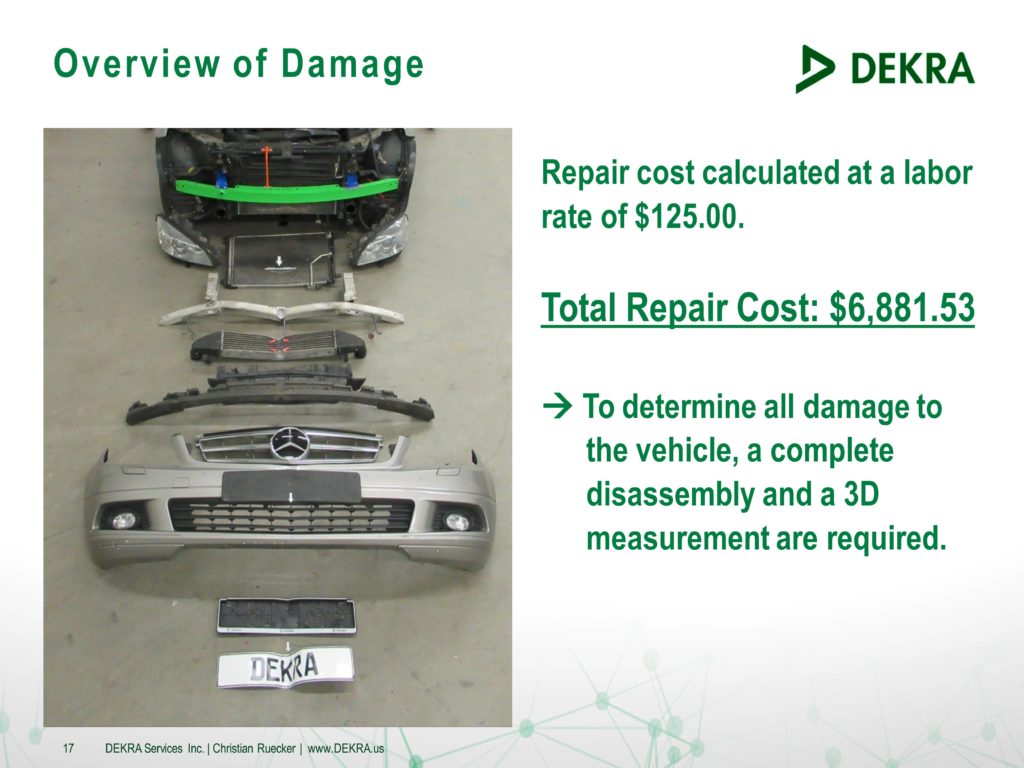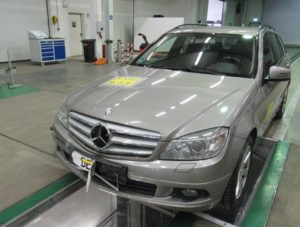
This is a structural repair: DEKRA shows hidden damage possible in sub-10 mph crash
By onBusiness Practices | Education | Repair Operations | Technology
A recent DEKRA presentation revealed how a low-speed collision into a trailer hitch could result in far more damage to a vehicle than was visible from the exterior.
The SCRS OEM Collision Repair Technology Summit talk Nov. 7, 2019, by DEKRA Services Managing Director Christian Ruecker raised questions about the value of photo estimating and parking lot damage assessments conducted by a repairer, consumer or insurer.
Ruecker called disassembly the “most crucial” part of the process.
DEKRA is a leading global safety testing and inspection firm which also manages more than 120,000 claims annually. Using its German crash test facility, the company ran a 2009 Mercedes C200 CDI T-Model at 6.1 mph (9.9 kph) into a trailer hitch mounted on an unbraked 2,932-pound barrier on wheels (simulating a crash into another vehicle).
A consumer would probably take a photo of the damage for the insurer, cash the ensuing check and possibly just keep the money instead of getting a repair, Ruecker said.
“They don’t understand,” he told the SEMA Week audience.
Such decisions could have an impact beyond the shop or insurer’s customer. Ruecker noted that he wouldn’t want his family riding in a vehicle like the one in the presentation — and mentioned the possibility of them entering an Uber.
Exterior damage to the 2009 C200 included the battered license plate, a scratch on the grille, a dent in the bumper, and incorrect gaps between the hood and a headlight.
But Ruecker revealed what lay beneath the surface of the 10-year-old vehicle, which he noted didn’t have the technology to reveal such an issue itself.
A partial disassembly revealed a large dent into the bumper reinforcement.
The cooling system took a hit too. The impact deformed the power steering cooling tube, tore the air conditioning condenser and damaged the radiator.
Not only were the bumper brackets pulled, demanding reinforcement, but one pulled the lower rail. This seemingly minor repair has just become a structural one, Ruecker said. The rail didn’t need replacement, but it did need straightening, he said.
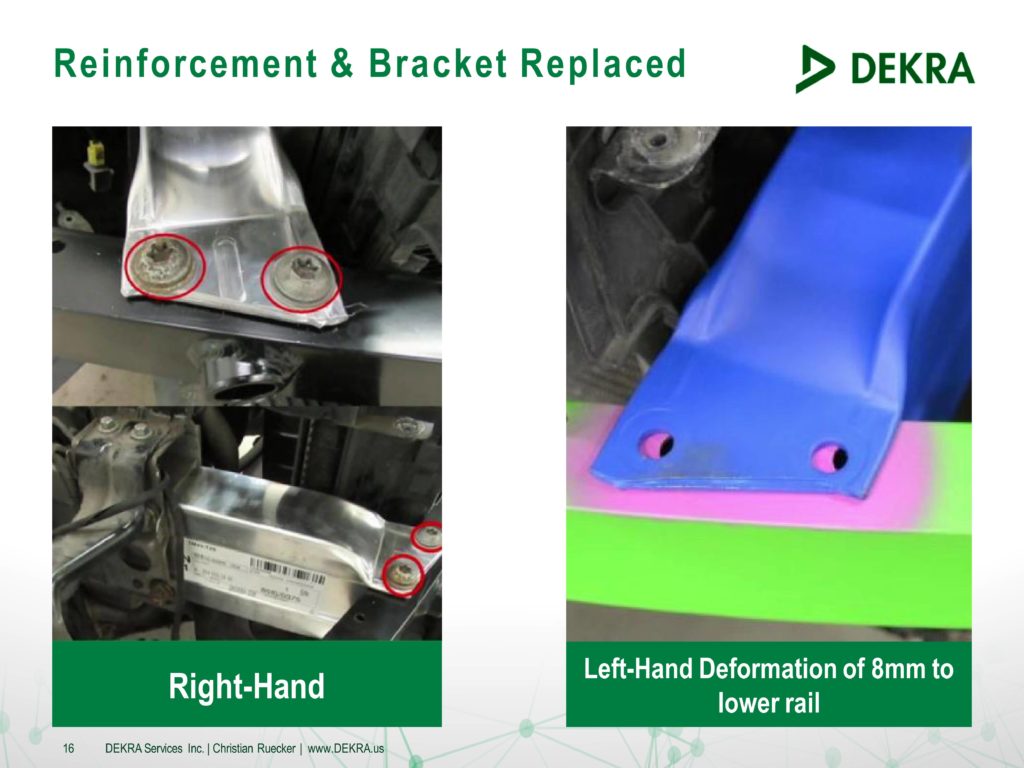
Images of damage sustained to a 2009 Mercedes C200 CDI T-Model following a 6.1 mph crash test into a trailer hitch mounted on a wheeled but unbraked barrier. (Provided by DEKRA)
“It had to go on a bench,” he said.
DEKRA calculated the repair bill using a German labor rate of $125/hour, yielding a cost of $6,881.53 to fix damage that some customers might have viewed as barely over their deductible.
Knock the labor rate down to $50 an hour for the U.S. market, and the bill still ends up at “roughly” $5,000 to fix the vehicle, according to Ruecker.
Based on the vehicle exterior, the amount might seem unbelievable to a customer and possibly even an insurer, according to Ruecker. The supplement will be a situation where the customer “freaks out,” he said.
It’s important for the collision industry to educate itself, consumers and “industry partners,” he said.
His slides ended with this:
I don’t have the perfect conclusion for you, but…
… even a trained and experienced professional will need to disassemble the vehicle to accurately judge the true damage to a vehicle AND
… think about your loved ones getting into a car where the owner decided not to repair the damage because of a “minor accident”!
More information:
“DEKRA Crash Test: Below the surface – Safety Consequences of Accidents under 10 mph.” slides
DEKRA, Nov. 7, 2019
“Damage from a Low Impact Collision”
DEKRA North America YouTube channel, Nov. 25, 2019
Images:
Images of damage sustained to a 2009 Mercedes C200 CDI T-Model following a 6.1 mph crash test into a trailer hitch mounted on a wheeled but unbraked barrier. (Provided by DEKRA)
A crash test of a 2009 Mercedes C200 CDI T-Model following a 6.1 mph crash test into a trailer hitch mounted on a wheeled but unbraked barrier produced nearly $6,000 worth of damage at a $125 labor rate. At $50 an hour, the bill would still be “roughly” $5,000, DEKRA calculated. (Provided by DEKRA)

